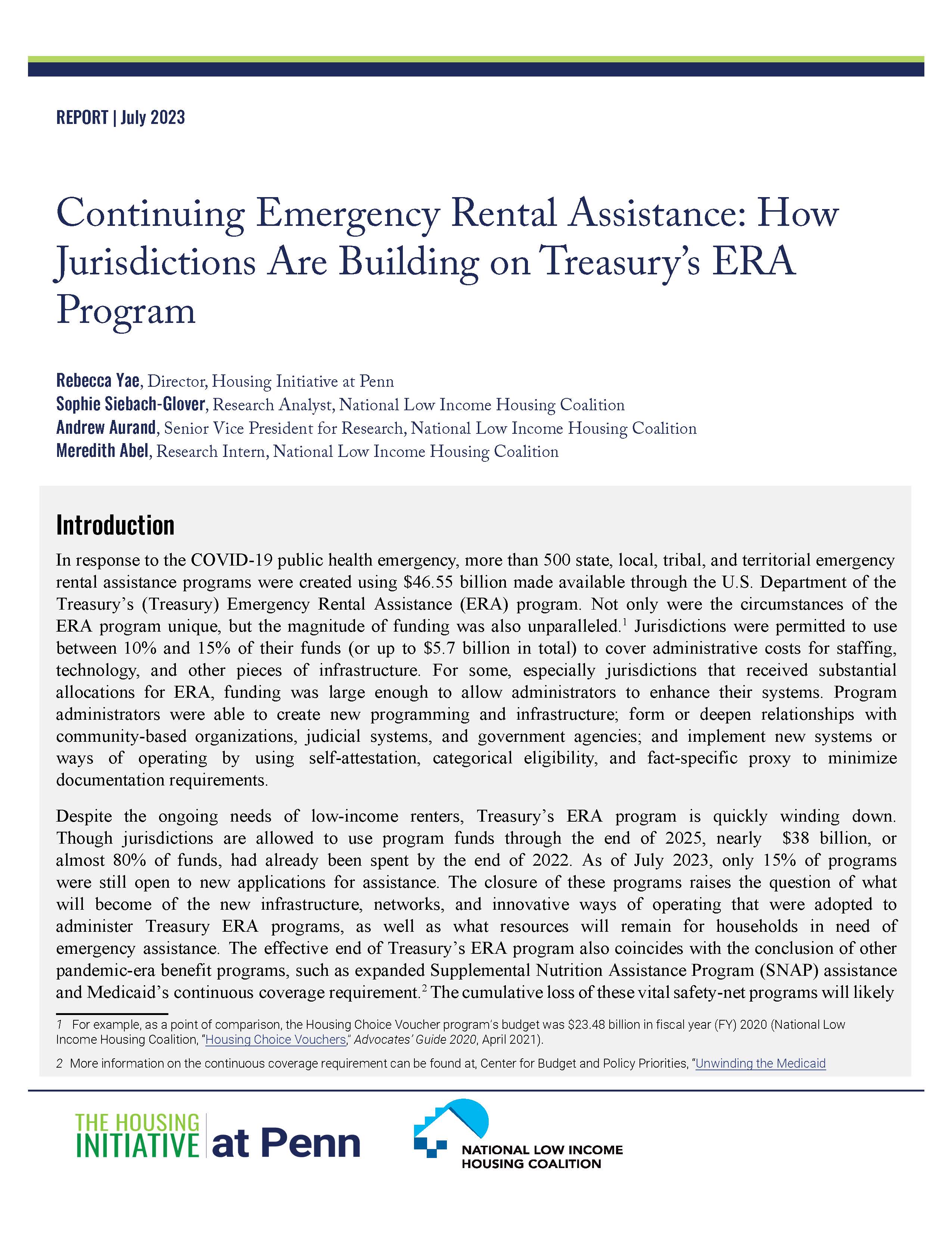New Report! Continuing Emergency Rental Assistance: How Jurisdictions Are Building on Treasury’s ERA Program
Jul 27, 2023
NLIHC and the Housing Initiative at Penn (HIP) released today a new report, Continuing Emergency Rental Assistance: How Jurisdictions Are Building on Treasury’s ERA Program. Drawing on survey data and semi-structured interviews, the report examines which components of the U.S. Department of the Treasury’s (Treasury) Emergency Rental Assistance (ERA) program are being retained by state and local jurisdictions, as well as the factors leading to their retention.
The report finds that nearly half of surveyed jurisdictions will continue to provide emergency rental assistance beyond the depletion of Treasury ERA funds. Those jurisdictions not continuing to provide assistance cited lack of a dedicated funding source and lack of staff capacity as barriers. Many jurisdictions that are continuing to provide assistance plan to retain components of their Treasury ERA programs, like flexibilities and court partnerships, in their continuing ERA programs.
The report’s key takeaways include the following:
- Jurisdictions are using a variety of funding sources to continue emergency rental assistance. Nearly half of jurisdictions continuing assistance are doing so in part using temporary federal funds (e.g., “American Rescue Plan Act” funds). More than half (57%) are using state and local funds at least in part. Among interviewees, plans to continue providing emergency financial assistance relied heavily on previously existing programs.
- One-third of jurisdictions not continuing emergency rental assistance are retaining or planning to retain at least one other component of their Treasury ERA program, such as legal services for tenants and housing navigation.
- Of those jurisdictions continuing emergency rental assistance, nearly two-thirds are allowing applicants to self-attest to certain eligibility criteria. Some jurisdictions are also determining household income via categorical eligibility (39%) or fact-specific proxy (16%). Just under 25% of surveyed jurisdictions are retaining at least one such flexibility in non-emergency rental assistance programs.
- Program administrators are continuing their work with courts. More than 40% of survey respondents indicated their jurisdiction plans to retain eviction diversion services and maintain partnerships with courts beyond the conclusion of Treasury’s ERA program.
Read the report at: https://nlihc.org/sites/default/files/Continuing_ERA_Final.pdf
